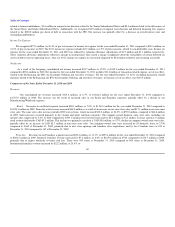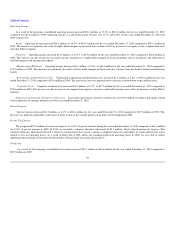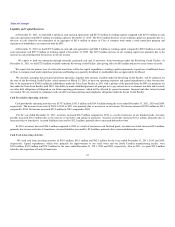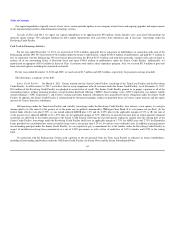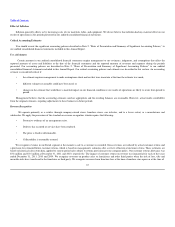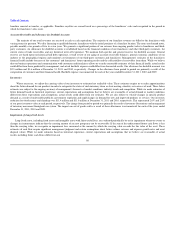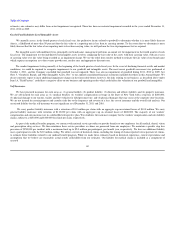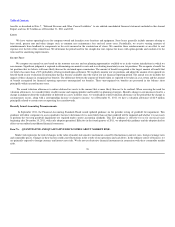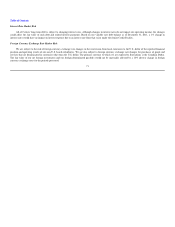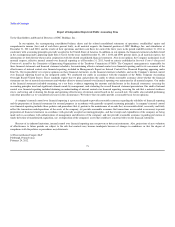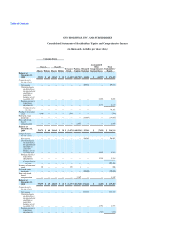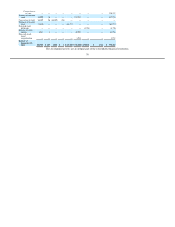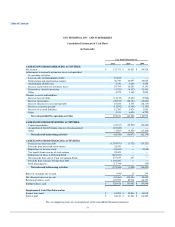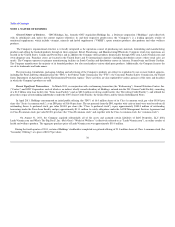GNC 2012 Annual Report Download - page 73
Download and view the complete annual report
Please find page 73 of the 2012 GNC annual report below. You can navigate through the pages in the report by either clicking on the pages listed below, or by using the keyword search tool below to find specific information within the annual report.
Table of Contents
benefits as described in Note 7, "Deferred Revenue and Other Current Liabilities" to our audited consolidated financial statements included in this Annual
Report, and was $1.9 million as of December 31, 2011 and 2010.
Leases
We have various operating leases for company-owned and franchise store locations and equipment. Store leases generally include amounts relating to
base rental, percent rent and other charges such as common area maintenance fees and real estate taxes. Periodically, we receive varying amounts of
reimbursements from landlords to compensate us for costs incurred in the construction of stores. We amortize these reimbursements as an offset to rent
expense over the life of the related lease. We determine the period used for the straight-line rent expense for leases with option periods and conform it to the
term used for amortizing improvements.
Income Taxes
We compute our annual tax rate based on the statutory tax rates and tax planning opportunities available to us in the various jurisdictions in which we
earn income. Significant judgment is required in determining our annual tax rate and in evaluating uncertainty in our tax positions. We recognize a benefit for
tax positions that we believe will more likely than not be sustained upon examination. The amount of benefit recognized is the largest amount of benefit that
we believe has more than a 50% probability of being realized upon settlement. We regularly monitor our tax positions and adjust the amount of recognized tax
benefit based on our evaluation of information that has become available since the end of our last financial reporting period. The annual tax rate includes the
impact of these changes in recognized tax benefits. The difference between the amount of benefit taken or expected to be taken in a tax return and the amount
of benefit recognized for financial reporting represents unrecognized tax benefits. These unrecognized tax benefits are presented in the balance sheet
principally within accrued income taxes.
We record valuation allowances to reduce deferred tax assets to the amount that is more likely than not to be realized. When assessing the need for
valuation allowances, we consider future taxable income and ongoing prudent and feasible tax planning strategies. Should a change in circumstances lead to a
change in judgment about the realizability of deferred tax assets in future years, we would adjust related valuation allowances in the period that the change in
circumstances occurs, along with a corresponding increase or charge to income. As of December 31, 2011, we have a valuation allowance of $2.9 million
principally related to certain state net operating loss carryforwards.
Recently Issued Accounting Pronouncements
In September 2011, the Financial Accounting Standards Board issued updated guidance on the periodic testing of goodwill for impairment. This
guidance will allow companies to assess qualitative factors to determine if it is more likely than not that goodwill will be impaired and whether it is necessary
to perform the two-step goodwill impairment test required under current accounting standards. This new guidance is effective for us for our fiscal years
beginning after December 15, 2011, with early adoption permitted. Effective in the fourth quarter of 2011, we adopted this guidance and the adoption had no
effect on our audited consolidated financial statements.
Item 7A. QUANTITATIVE AND QUALITATIVE DISCLOSURES ABOUT MARKET RISK.
Market risk represents the risk of changes in the value of market risk sensitive instruments caused by fluctuations in interest rates, foreign exchange rates
and commodity prices. Changes in these factors could cause fluctuations in the results of our operations and cash flows. In the ordinary course of business, we
are primarily exposed to foreign currency and interest rate risks. We do not use derivative financial instruments in connection with these commodity market
risks.
70


